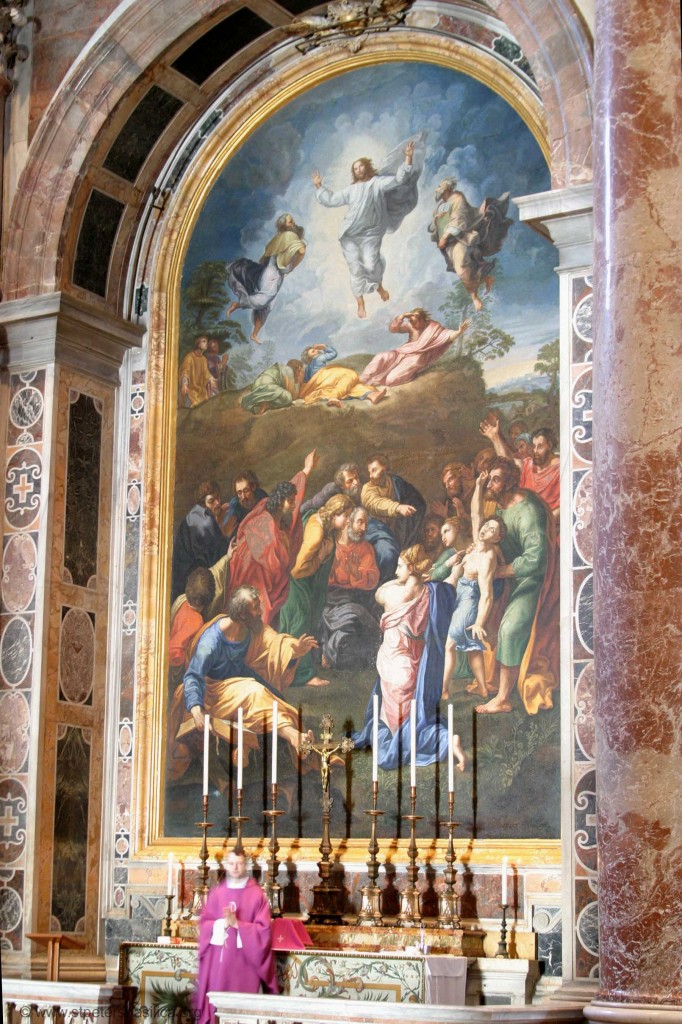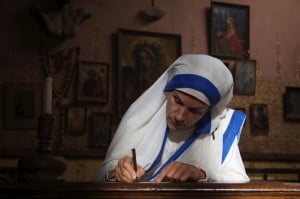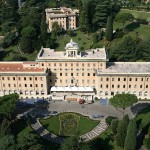This morning I attended Mass, not at our regular parish where my husband serves as deacon, but at the Church of the Transfiguration which is nearer our home. My schedule change was providential: Transfiguration parish was planning a picnic and a grand celebration for the Feast of the Transfiguration, which will be observed in other parishes on Tuesday.
So I was reminded of the great and beautiful story of Jesus’ revealing his true nature to three of the apostles on the top of a mountain. The story is recounted in the three synoptic Gospels, but this year it’s the version from Luke’s Gospel that we hear during Mass.
I told a story a while back about the artist Raphael’s deathbed masterpiece, a painting of the Transfiguration on which he worked as his health deteriorated, and which he stood at the head of his bed in his last days. (Check out that dramatic story here.)
The original painting, which was commissioned by Giulio de’Medici for the French Cathedral of Narbonne, did not make it to Narbonne but remained instead in St. Peter’s in Rome; but in 1797, the Emperor Napoleon had it taken to Paris. The painting was returned to the Vatican in 1815, and now hangs in the Vatican Museum.
* * * *
Today, though, I want to show you the mosaic reproduction of Raphael’s work which hangs in St. Peter’s Basilica near the Clementine Chapel, above the Altar of the Transfiguration. One of the most beautiful mosaic altarpieces in St. Peter’s, it took a team of six artists nine years—from 1758 through 1767—to complete it.
Look closely at the mosaic, which actually captures two different stories:
At the top, bathed in light, Jesus is borne aloft between the prophets Moses and Elijah while the Apostles Peter, James and John, lying prostrate on the earth below, contemplate this glimpse of paradise. On the far left, almost hidden, are Felicissimus and Agapitus, two third-century Christian martyrs who are commemorated on August 6 in the extraordinary form of the liturgy, and whose feast day is an optional memorial on August 7 in the ordinary form. Saints Felicissimus and Agipitus were deacons of Pope Sixtus II, and they were probably martyred on August 6, 258 A.D., on the same day as he was.
The lower scene portrays the healing of the young man who was “possessed” by evil spirits. The woman in a pink tunic who kneels near the center represents the Church, which offers peace and hope and invites us to await them as gifts from above.
* * * *
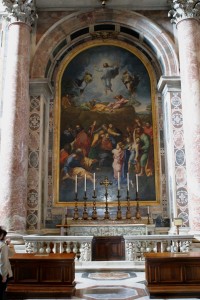 The Altar of the Transfiguration has an interesting history in itself, and offers an example of just how much things change in the great Basilica.
The Altar of the Transfiguration has an interesting history in itself, and offers an example of just how much things change in the great Basilica.
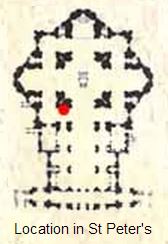
The Altar of the Transfiguration, with its great mosaic altarpiece, is located near the Clementine Chapel and the entombed remains of Pope St. Gregory the Great. Directly across the aisle is the Monument to Pope Innocent XI, where that fifteenth century pope was once entombed.
Innocent’s remains were exhumed when his beatification cause was opened, and were found to be still incorrupt 267 years after his death. He was reburied in the grotto beneath St. Peter’s in a glass and bronze-work sarcophagus, his hands and face masked in silver. When he was beatified in October 1956, Innocent’s sarcophagus was again moved upstairs and situated under the Altar of St. Sebastian. He was moved once again, though, in 2011 to make room for the sarcophagus of the newly-beatified Pope John Paul II. Pope Innocent was laid to rest under the Altar of the Transfiguration, where he remains today—right across the aisle from where he was in the first place.
Luke 9:28B-36
Jesus took Peter, John, and James
and went up a mountain to pray.
While he was praying his face changed in appearance
and his clothing became dazzling white.
And behold, two men were conversing with him, Moses and Elijah,
who appeared in glory and spoke of his exodus
that he was going to accomplish in Jerusalem.
Peter and his companions had been overcome by sleep,
but becoming fully awake,
they saw his glory and the two men standing with him.
As they were about to part from him, Peter said to Jesus,
“Master, it is good that we are here;
let us make three tents,
one for you, one for Moses, and one for Elijah.”
But he did not know what he was saying.
While he was still speaking,
a cloud came and cast a shadow over them,
and they became frightened when they entered the cloud.
Then from the cloud came a voice that said,
“This is my chosen Son; listen to him.”
After the voice had spoken, Jesus was found alone.
They fell silent and did not at that time
tell anyone what they had seen.

